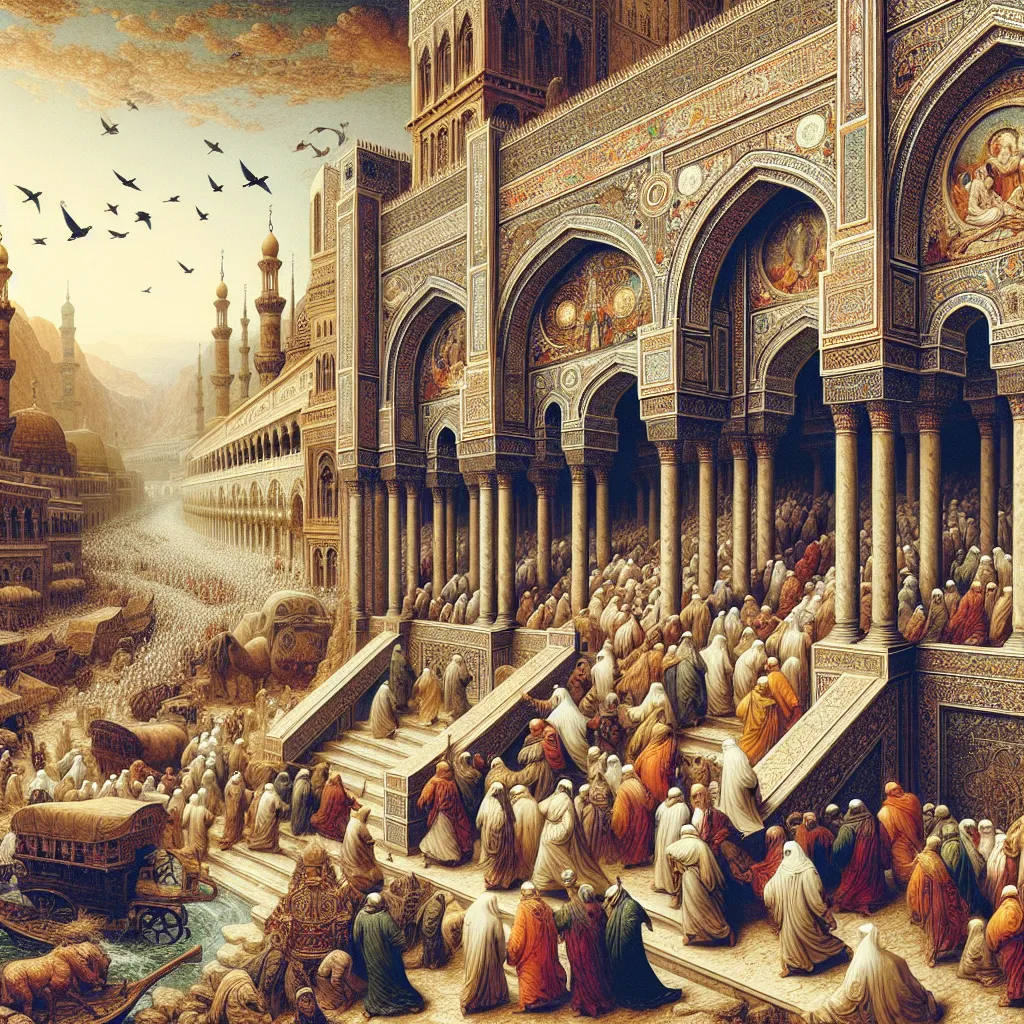
- Published on
- Authors

- Name
- You
The Life of Muhammad: A Journey from Mecca to Medina
Introduction
The life of Prophet Muhammad is a profound tapestry interwoven with moments of divine inspiration, societal revolution, and profound personal sacrifice. He stands at the intersection of the historical and the mystical, bridging the world of early 7th century Arabia with eternal spiritual paradigms that echo through centuries. This journey traces his life from the early days in Mecca, through the persecution he faced, to his pivotal migration to Medina (the Hijra), where he established the first Islamic state.
Early Life in Mecca
Table of Key Events
| Year | Events in Muhammads Life |
|---|---|
| 570 CE | Birth in Mecca |
| 610 CE | First revelation on Mount Hira |
| 613 CE | Public preaching begins |
| 622 CE | Migration (Hijra) to Medina |
| 632 CE | Passing away in Medina |
Before plunging into the profound depths of his prophetic mission, let's briefly outline Muhammad’s life in Mecca, a bustling trade hub.
Childhood and Early Influences
Born in 570 CE in the powerful yet polytheistic city of Mecca, Muhammad was raised by his grandfather and then by his uncle after being orphaned at a tender age. Exposed to variegated cultural and religious ideas through Mecca's vibrant marketplaces, he grew spiritually curious and deeply introspective.
The First Revelation
At the age of 40, while meditating in the caves of Mount Hira, Muhammad received the first of many divine revelations from the angel Gabriel. This moment was not merely the birth of a prophet; it was the dawn of Islam.
The Meccan Period: Challenges and Perseverance
Public Preaching and Initial Resistance
With unyielding resolve, Muhammad began to preach monotheism, disrupting the pagan status quo. His unwavering message of social equity, justice, and monotheism posed a threat to Mecca's elites, inciting significant opposition and persecution.
Key Teachings in Mecca
- Tawhid: Absolute monotheism.
- Social Justice: Aid for the poor and oppressed.
- Accountability: Belief in the Day of Judgment.
The Hijra: Migration to Medina
Reasons for Migration
Life in Mecca grew increasingly perilous for Muhammad and his followers. In 622 CE, Muhammad embarked on the Hijra (migration) to Yathrib, later known as Medina. This journey was not just a physical migration, but a monumental turn in Islamic history.
Establishing Medina
In Medina, Muhammad’s leadership flourished. No longer a marginalized prophet, he became a statesman and military leader, crafting the Constitution of Medina—a proto-constitutional document ensuring religious freedom and mutual respect among diverse tribes.
Highlights of the Constitution of Medina
- Unity: Emphasis on the ummah (community).
- Equality: Equal rights for all citizens, irrespective of faith.
- Justice: Establishment of judicial authority for resolving disputes.
Legacy and Conclusion
Muhammad’s final years in Medina were marked by the consolidation of Islamic teachings and significant battles, notably the battles of Badr and Uhud. In 632 CE, he passed away, leaving behind not only a new religion but also a vibrant community bound by faith, law, and moral values.
Reflection
From the alleys of Mecca to the streets of Medina, Muhammads journey reshaped history and spiritual thought. His life transcends religious dogma, offering timeless wisdom that resonates in the modern psyche—a beacon for seekers of truth, justice, and divine connection.
In exploring the life of Prophet Muhammad, one doesn't merely trace historical events; one embarks on a spiritual odyssey, navigating the mystical currents that sculpted the contours of early Islamic civilization.
